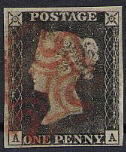Postage stamp

Postage stamps were introduced by the British Post Office in 1840, thus inaugurating the era of snail mail. Because snails tend to be anti-social and do not have fixed addresses, early attempts were complete failures.
In technical terms, postage stamps are printed on small scraps of paper that are affixed to envelopes through the use of lickable adhesives, an idea shamelessly stolen from the Christmas and Easter Seals campaigns. Mint postage stamps have adhesive backs that come in a variety of innovative mint flavours including chocolate mint, the Royal Mint, bitter mint, and the Denver Mint.
Contemporary use of postage stamps[edit | edit source]
Thanks to competition from the Pony Express, snail mail is used nowadays only by ponies, and by Scrabble-playing postage stamp collectors who are awaiting postage stamps ordered from the post office. While the sale of postage stamps remains a good revenue source, the post offices of the world's leading industrialized nations, as well as those of the major small postage stamp countries, are finding it difficult to maintain their profits, which are used to ensure the continuing livelihood of their personnel (called partners) and the engagement of new partners.
Therefore, these post offices have recently formed OPEC (Organization of Postage-Stamp Exporting Countries) under the auspices of the United Nations.
OPEC's mission is to introduce and administer an internationally-binding requirement that all transmitted e-mails be accompanied by a valid postage stamp issued by an OPEC country. The measure has been tentatively approved by the International Organization for Standardization. Unfortunately, however, OPEC has put the implemention of the measure on hold pending further studies, as an unexpected snag has been encountered: Systems tests so far inexplicably show that the postage stamp speeds up (rather than slows down) e-mail transmission times, which defeats the usefulness of postage stamps on e-mails.
Stamp collecting[edit | edit source]
Philately (alternate spelling: "fellatioly") is the study and collection of stamps. The hobby involves the licking the backsides of Queen Elizabeth or dead Presidents of the United States with one's tongue. When the actual head of state is unavailable, hobbyists will resort to licking postage stamps bearing their image.
While emotionally rewarding, stamp collecting is an extremely dangerous activity that carries the following risks:
- never reproducing or "doing it"
- discovering that you've spent a lot of time and money on a book full of small colored pieces of paper that you can't take with you when you're dead, and can't even use to send mail anymore
- being attacked by Giuseppe Verdi (happened to me at least five times)
- some stamps may actually be haunted and that's really spooky
- being bitch slapped by Stampy, the anthromorphic stamp collecting stamp mascot
Faulty stamps[edit | edit source]
The production and export of faulty stamps is the main income source of many small, non-OPEC nations including French Guiana, United Spades of America and The Moon.
Faulty stamps can be grown in either of two hundred ways: through offsets or seed. Being genetic clones of the parent stamp, offsets are the only way to enlarge the stock of a given faulty stamp cultivar. By contrast, faulty stamps do not come true from seed; the mixing of genes between parent faulty stamps is very unpredictable. A faulty stamp grown from seed will usually bear only a passing resemblance to the stamp from which the seeds were taken. This makes for great potential in breeding new faulty stamps, and great variation in the wild. However, faulty stamps growers must be patient: offsets often take at least a year to grow to sufficient size to stamp, and a faulty stamp grown from seed will not grow for anywhere between five and seven years after planting. "Broken" faulty stamps (i.e., stamps affected by the spam virus) will occasionally revert to plain stamp, but will usually maintain their colourful, infected state when grown from offsets.
